Review: Huawei Honor 6X
Jan 25, 2017, 3:45 PM by Eric M. Zeman
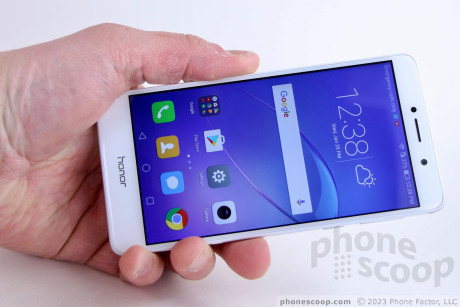
Huawei's Honor brand takes another stab at the U.S. market with the 6X. This mid-range handset features an attractive metal-and-glass design accompanied by a reasonable set of specs under the hood. The 6X, an unlocked Android smartphone, might be ideal for those who are looking for something off the beaten path. Here is Phonescoop's review.
Is It Your Type?
The Honor 6X is a high-quality, mid-range handset for those who prefer unlocked devices to those sold by carriers. If you're in the market for a classy, affordable smartphone that you can use in the U.S. and most anywhere you care to roam, the 6X is small fish in an ever-widening ocean of such handsets.
Body
Huawei's Honor brand has been around for some time now, but last year's Honor 8 and this year's Honor 6X are the first two that it has really pitched at U.S. buyers. The Honor 6X costs about the same as most mid-range smartphones sold by prepaid carriers such as Cricket and MetroPCS. The 6X's attractive build, however, gives it a bit of an edge as far as sex appeal is concerned.
The 6X is a metal-and-glass slab. Curved glass forms the face and an aluminum panel fills out the rear surface. Polished edges and accents provide some eye-catching glint every so often. Huawei cooked up three color combinations: white/silver, white/gold, and black/gray. All three variants are perhaps a bit conservative, but the schemes work well and ensure the 6X is always looking sharp.
The phone's 5.5-inch display means it is a little above average in terms of size. For example, it's much bigger than the iPhone 7 and Galaxy S7, and yet it is somewhat smaller than an iPhone 7 Plus and Pixel XL. I found the phone to be comfortable to hold and use, and it didn't strike me as over-sized or too big. If you have smaller hands, or if you simply prefer compact smartphones, the 6X might not be the best fit for you. Thank Hauwei for the smooth surfaces and rounded edges, which go a long way toward helping the phone slip easily into pockets.
Huawei assembled the 6X from a fine selection of materials. The glass panel feels great under your thumb, and the metal back plate works well, too. I like the granular finish of the metal, which gives it a small amount of sparkle. The components are all fitted together perfectly with the exception of the plastic end caps on the rear surface. The joint between the plastic and metal pieces could be smoother. Still, the quality of the 6X easily surpasses that of plastic phones that carry the same price point. Most people will be pleased with the 6X as they hold it in their hand.
The 6X uses 2.5D curved glass on the front. Because the glass is curved right where it meets the plastic frame, the joint between the frame and glass is pretty obvious to your eyes. It doesn't look bad, but it is noticeable. The screen fills most of the front surface and yet there's still plenty of bezel. The user-facing camera and sensor array are plainly visible on either side of the earpiece. Huawei opted for software buttons so there are no physical controls below the screen.
The lone functional element built into the phone's left edge is the SIM card tray. Like many modern handsets, the tray supports either one SIM card and one microSD card, or two SIM cards. The tray itself is made of metal and feels strong. The screen lock button and volume toggle are both found in the upper half of the 6X's right edge. Both have well-defined profiles and polished edges to help them stand out. The buttons deliver excellent travel as far as feel is concerned, but the clicking sound comes off a bit cheap to my ears. Huawei stuck the 3.5mm headphone jack on top, and the microUSB port (c'mon, no USB-C???) on the bottom.
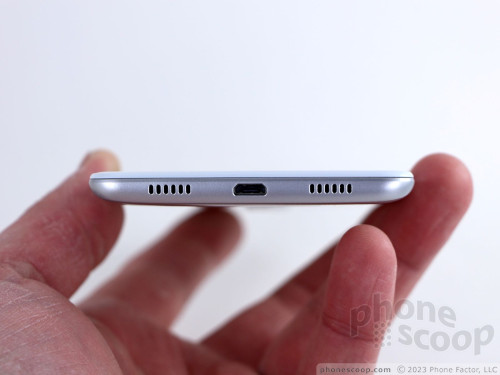
I like the curve of the 6X's back panel. The aluminum that forms most of the surface bends aggressively as it flows into the side edges. The silver color of our review unit is nice, but I like the gold a bit better. I wish Huawei had been able to match the colors of the plastic end caps a bit better. They are darker and less sparkly than the aluminum. There's no missing the camera array near the top; it is a large, raised oval and is rimmed in reflective chrome. The LED flash is off to the right of the camera, and fingerprint sensor is below. Like many rear-mounted fingerprint readers, the 6X's reader is a small, indented circle. It's very easy to find by feel.
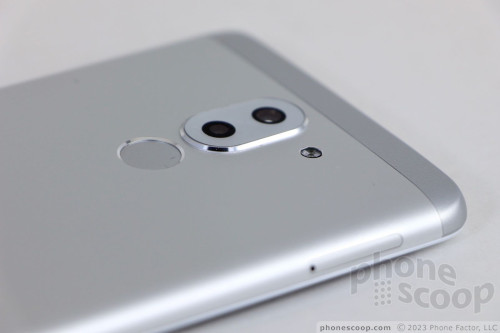
The phone is sealed up tight and that means there's no access to the battery at all. That may be a dealbreaker for some people.
Huawei did a fine job putting together a good-looking handset that feels as fine as it works.
Screen
A 5.5-inch full HD display adorns the front of the Honor 6X. I have no complaints about the screen. The size and resolution work well together to ensure a respectable pixel density (403ppi). Most on-screen elements look clear and sharp. Colors are accurate and the LCD puts out enough light for indoor and outdoor use. Viewing angles are fine. Perhaps the only aggravating aspect of the screen is the lack of oleophobic coating, which means the glass finds itself covered in fingerprint slime much of the time. I found myself cleaning the glass often.
Signal
Huawei gave the Honor 6X decent support for the LTE networks of AT&T/Cricket and T-Mobile/MetroPCS via Bands 2, 4, 5, 12, and 17. I tested the 6X in the NYC area on AT&T's network and would call its performance average. The phone connected to AT&T's wireless signals with no issue. It defaulted to 4G most of the time, but I saw it drop down to 3.5G in weak signal areas. Branded AT&T phones more consistently stay on 4G even in weaker coverage zones. This didn't impact the Honor 6X's ability to connect calls. The phone didn't give me any trouble patching through on the first dial. It did drop one call at highway speeds, but it didn't miss any.
Raw data speeds left me unimpressed. The quickest download I saw was 20 Mbps and the fastest upload was half that at 10 Mbps. Flagship handsets can put up numbers two to three times faster. As far as real-world performance is concerned, the 6X was a little sluggish when browsing the web and social networks via LTE. Streaming media (Spotify, YouTube) was not great and the 6X experienced lots of stops and buffering.
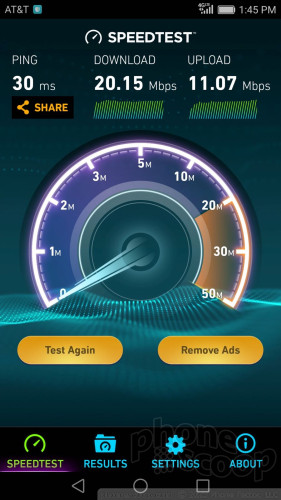
Sound
Call quality didn't impress me much. Clarity is acceptable thanks to minimal distortion. Voices sound good as they reach your ear. The issue is volume: there simply isn't enough of it. Even with the "loud voice" mode turned on, calls were barely audible in my quiet office, let alone anywhere there's real background noise. Calls were all but impossible to hear in moving cars, in noisy coffee shops, or other spaces where there's even a modicum of din. People I spoke to through the 6X said I sounded distant.
The speakerphone isn't any better. It offers a hair more punch to the sound, but quality nosedives thanks to annoying levels of distortion. I wasn't able to maintain discernible conversations in a moving car nor just about any place other than my home when using the speakerphone. Ringers and alerts are barely loud enough, and the vibrate alerts could be better, too.
Battery
One place the 6X excels is battery life. Huawei crammed a 3,340 mAh lithium-ion battery in the phone's chassis and it delivers. I consistently found the battery pushing through 1.5 days, and sometimes it lasted 2 days. As always, I tested the phone with all the radios on and the brightness set to 50%. The 6X outlasts many of today's top handsets.
The 6X includes an extensive array of battery-saving tools. For example, the phone can be set to run in three separate power modes: standard, power-saver, and ultra power-saver. The phone also offers lots of analytical tools so you can see exactly which apps are draining your battery and learn how to manage them.
Last, the Honor 6X supports rapid charging. Huawei claims the battery can go from 0% to 100% in about 2 hours when plugged into the appropriate charger. More importantly, you'll see a jump of about 35% if you plug the phone in for just 20 minutes.
Bluetooth, GPS, NFC, WiFi
With Bluetooth 4.1 aboard, the 6X paired and connected with headphones, wearables, and other accessories with minimal impact to battery life. I was not pleased with calls made via Bluetooth headphones. As with the earpiece, clarity was great but the volume just didn't cut it. The same is true of calls patched through my car's hands-free system. Music sounded okay when used with stereo headphones, but I wasn't blown away.
Google Maps did not run well on the Honor 6X. The blue GPS dot always showed up right away, but it was sometimes left floating on a blank screen. The app ran like molasses via LTE and WiFi. It was okay for searching out points of interest and plotting directions, but it was useless as a real-time navigation tool. It simply couldn't keep up.
The Honor 6X doesn't have NFC, but the WiFi worked well enough.
Comments
No messages


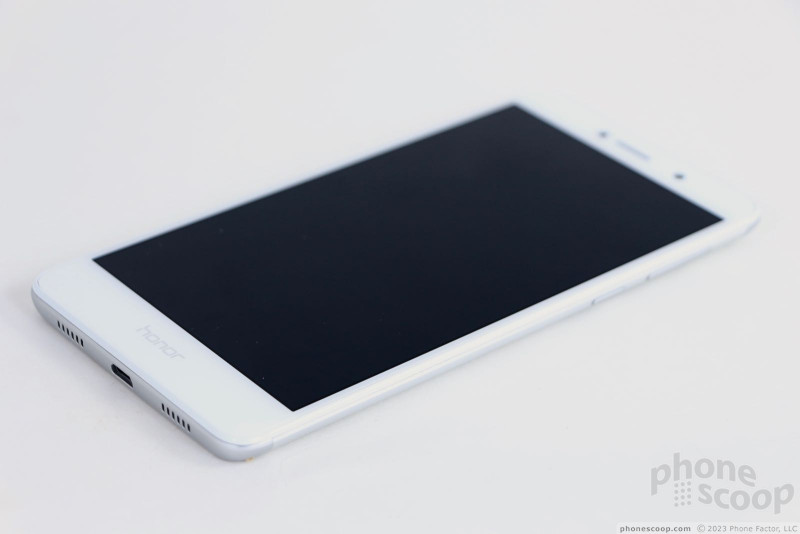















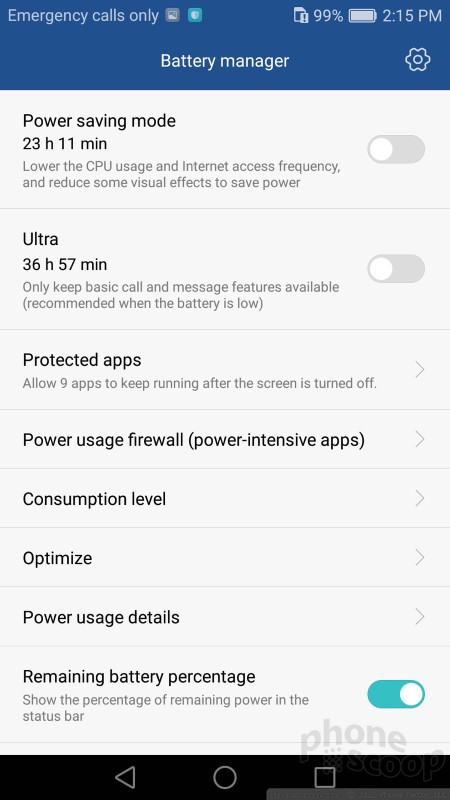





 Best of CES 2017
Best of CES 2017
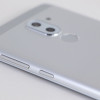 Hands On with the Huawei Honor 6X
Hands On with the Huawei Honor 6X
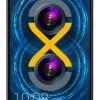 Huawei Makes the Unlocked Honor 6X Available At Target Stores
Huawei Makes the Unlocked Honor 6X Available At Target Stores
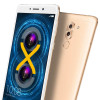 Huawei's Honor 6X Adopts EMUI 5.0 and Android 7 Nougat
Huawei's Honor 6X Adopts EMUI 5.0 and Android 7 Nougat
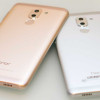 Huawei Touts the Dual-Camera Honor 6X
Huawei Touts the Dual-Camera Honor 6X
 Huawei Honor 6X
Huawei Honor 6X



